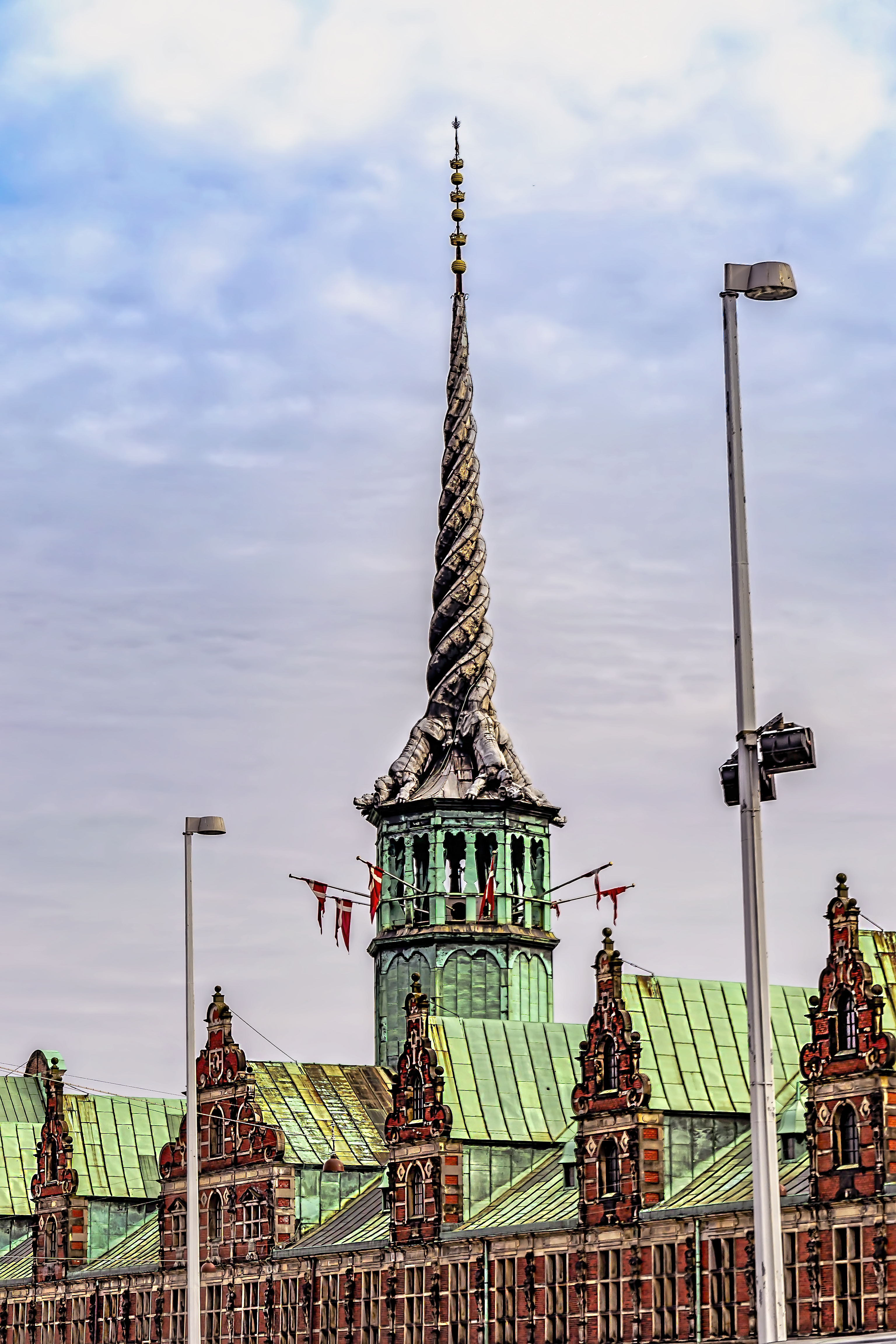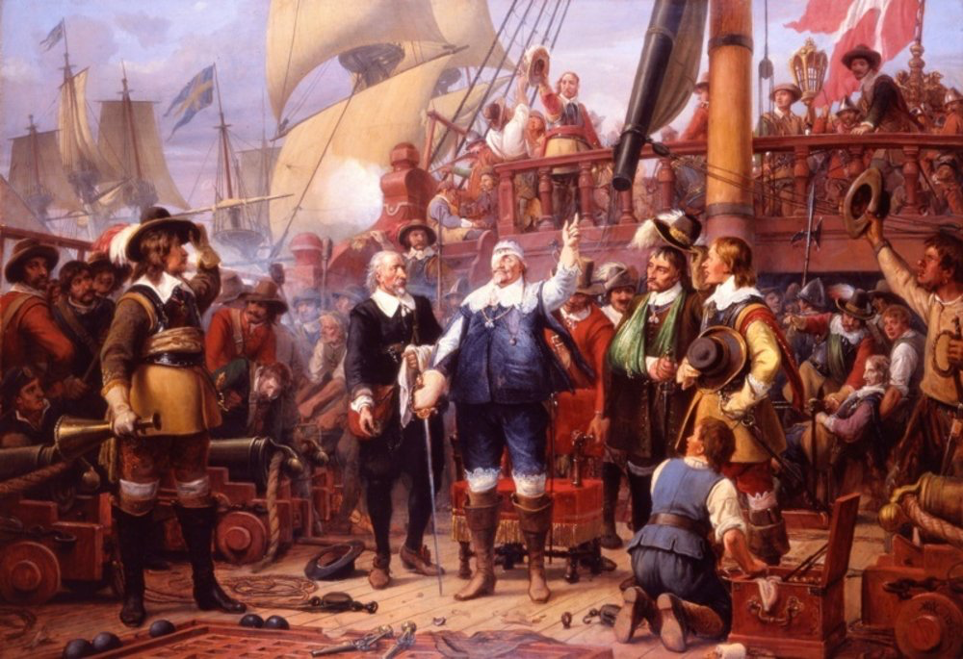Christian IV and the use of history
Christian IV (1577-1648), who ruled Denmark and its possessions from 1588-1648, is probably the most famous - and infamous - king in the history of Denmark. On the one hand, he is known as the longest reigning monarch, as the patron and creator of some of the country's most significant and spectacular buildings. On the other hand, he is also known as the king who definitively crushed Denmark's dreams of being a great power.

Christian IV's incredibly complex and contradictory personality has also contributed to his mythical aura, and has led to him being portrayed as a symbol of Danishness, for better or for worse. Christian IV himself used his own fascination with antiquity and ancient Nordic history in propaganda to further both his own and Denmark’s agenda, domestically and in foreign policy, within art, architecture and – importantly – in the writing of history. What is more, he did so with great zeal and skill.
Christian IV’s use of history: The Renaissance prince
In his own time, Christian IV was very active in using and creating history. All the princes and social elites of Europe found a powerful political tool in Renaissance art and Christian IV was no different; Renaissance art was able to legitimise royal status both at home and abroad - and this was by all accounts necessary. The political and religious map of Europe underwent major changes in the 16th and 17th centuries, so rulers at the time were eager to find ways of legitimising their princely hold on power. The means to do so was found primarily in Greco-Roman antiquity, but also in local mythological universes. These different strands of 'history' were united to great success and, in so doing, Christian IV actively wrote himself into a common European Renaissance tradition.
Constructing cities
Christian IV invested massively in countless magnificent buildings, including the Old Stock Exchange (Børsen) and the Round Tower (Rundetårn) in Copenhagen and, not least, the castles of Frederiksborg and Rosenborg. They still stand today commemorating the greatness of the king. And if the buildings themselves were not memorable enough, the ubiquitous monogram "C4" plastered everywhere continues to bring the great king who constructed them to mind. Even Christian IV’s name was used as an asset, becoming an historical fixture both in and outside Denmark, with his ambitious founding of large cities, many of which bore his name, e.g. Christianshavn (in present day Copenhagen), Christiania (present day Oslo) and Christianopel in Blekinge (Southern Sweden).
Danish history 'on request'
Both the fact that Christian IV used history politically and to such a great extent is perhaps most evident in how history was written during his own life time. He initiated the writing of two books on Danish history, both written around 1630 and in Latin, and both written by Dutch authors, Johannes Pontanus and Johannes Meursius. Common to these quite different works was their purpose in portraying Denmark as the ideal kingdom, characterised by the relationship of complete harmony and balance between the divine right of the king and the royal council (rigsrådet) - in spite of the fact that Denmark did not formally become a hereditary monarchy until 1660. The books also portray the greatness and influence of the Danish kingdom on the rest of Europe which was useful to Christian IV's expansive foreign policy. Meursius, for example, portrayed Denmark as the great power of the Nordic countries, a status that had its roots in a distant legend.
In contrast, Denmark’s arch enemy at the time, Sweden, was presented as a vassal kingdom where the king had received his power from the Danish monarch and was subordinate to him. In the light of this narrative, any war between Denmark and Sweden was portrayed as a rebellion against the rule of the ‘just’ Danish king. Attempts had already been made to present this type of narrative in the second half of the 16th century, but they were found to be too provocative towards the Swedish king at that time. This was largely due to an agreement made following the Seven Years' War (1563-1570) which had banned open abuse between the two countries. The relationship between Denmark and Sweden had, in fact, not warmed that much during Christian IV’s reign which had started in 1588. Even so, the king's chancellor, Christen Friis, thought it wise to ask Meursius to moderate his criticism - while still leaving room for what amounted to a clear political attack on the Swedes.
We do not know how Christian IV himself perceived the works, only that he paid the two historians to write down Denmark’s national history. That the king's closest official, Christen Friis, exercised such great influence over the political angle of the content shows their political significance at the time, both domestically and internationally.
The legacy of Christian IV: The father of the country
Since his reign, Christian IV has been portrayed as the great national father of Denmark by both artists and historians. Since the beginning of the 18th century, historians such as Ludvig Holberg and Niels Slange, have helped to strengthen the mythologising of Christian IV. In many ways, he became the symbol of the nationalistic winds that blew in the wake of state bankruptcy in 1813, the loss of Norway in 1814 after the Napoleonic Wars, and finally, the loss of the duchies of Holstein and Schleswig in 1864.

Picture: Painting by Wilhelm Marstrand, around. 1864, showing the heroic moment in which the wounded king tells the crew of "Trinity" to keep fighting. Public domain (Wikimedia commons).
The wounded hero
One event in particular seems to have fueled the myth around Christian IV, namely the battle of Kolberger Heide on 1st July 1644. The king was wounded and lost sight in one eye during the naval battle on the flagship "Trinity", but he allegedly encouraged the crew to continue to fight. The visual and symbolic potential of the situation is unmistakable: the wounded king rouses his men to fight on in the name national honour and greatness. In this way, Christian IV has become the epitome of the brave national hero who can be referred to by both artists and historians as a focal point for rallying the people in the name of the nation and its standards at any particular point in time.
The picture of the wounded Christian IV on the deck of the "Trinity" became a favourite motif for Golden Age art, and most Danes know Wilhelm Marstrand's dramatic painting from Christian IV's own grave in the chapel of Roskilde Cathedral. The decoration of the chapel is in itself a manifestation of the cult that existed around Christian IV and that which characterised large parts of the 19th century. In music and theatre, the king was also idolised almost without restraint, and the royal song ”Kong Christian stod ved højen Mast” ("King Christian stood by the lofty mast"), which was originally written in 1779 as a direct reference to the battle of Kolberger Heide, was included in many plays during the 19th century, e.g. Johan Ludvig Heiberg's "Elverhøj" (1828).
From heroic to popular
At the end of the 19th century, opposition to the creation and use of romantic national myths within the study of history grew. The myth of Christian IV as the Danish primordial hero was replaced during the 20th century by a more critical view of the king. For example, there was criticism of the king's foreign policy, primarily the catastrophic involvement in the Thirty Years War which lead to a two-year German occupation of Jutland, and was considered to be the beginning of Denmark's fall from grace as a great European power. This fall was concluded with the defeat in 1864, and indeed it was shortly then after with the processing of the "wounds" from this defeat that the critique of Christian IV started to grow.
The portrayal of the king almost completely stopped around the end of the 19th century, but the memory of Christian IV lives on in Denmark’s collective national memory. Today, Christian IV has become the symbol of populism. It is therefore the king's love of the joys of life that is most widely remembered now. His appetite for music, alcohol and women makes him human and recognisable, just as the nickname Christian Firtal (Christian Four) has only increased his popular impact.
Nowadays, the old king with an eye patch still appears in pub names and on stamps, and his name and portrait happily advertise any product or event that has the slightest reference to him. The story of Christian IV - and not least the use of this story - is thus still alive and well and is widely used commercially to market certain products which supposedly appeal to the Danes' "Danishness".
This article was translated from Danish by the nordics.info team and approved by the author. Kind permission was given to translate it by danmarkshistorien.dk. Read the article in Danish on danmarkshistorien.dk.
Further reading:
- Carsten Bach-Nielsen, Johan Møhlenfeldt Jensen, Jens Vellev and Peter Zeeberg (eds): Danmark og renæssancen 1500-1650 [Denmark and the Renaissance, 1500-1650] (2006).
- Nina Damsgaard, ed., Danmarks Christian. Chr. IV i eftertiden [Denmark’s Christian. The Legacy of Christian IV] (1988).
- Meir Stein, Christian den Fjerdes Billedverden [Christian IV’s World of Art] (1987)
- Steffen Heiberg, Christian 4. – en europæisk statsmand [Christian IV – a European Statesman (Second edition, 2009).